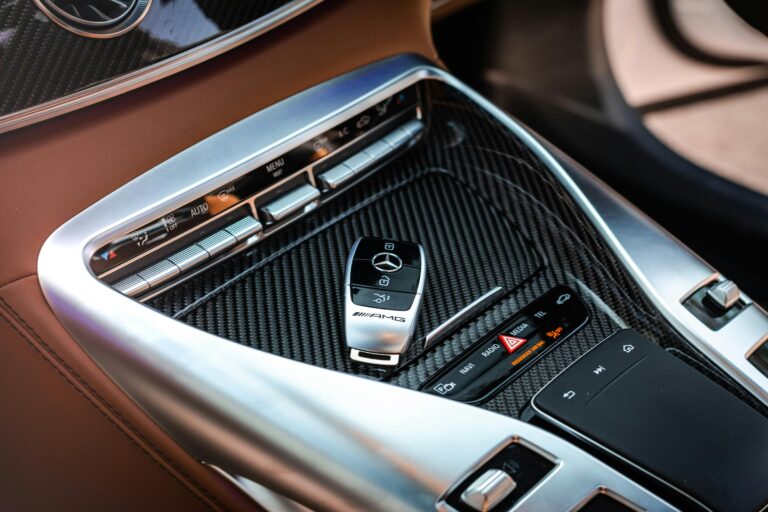Car insurance isn’t one-size-fits-all anymore. With technology shaping how insurers calculate risk, drivers now have more choices than ever. The biggest change? The rise of usage-based insurance (UBI), where your premium depends on how – and how well – you drive. But how does it actually stack up against traditional insurance models? And which one makes more sense for your lifestyle? Let’s break it down clearly and practically.

What Is Usage-Based Car Insurance?
Usage-based insurance, or UBI, is a modern approach that tailors your premium to your driving habits. Instead of charging based on general factors like age, zip code, or vehicle model, UBI relies on real-time data collected through telematics devices, smartphone apps, or built-in car sensors.
It tracks metrics such as:
- Mileage
- Speed and braking patterns
- Time of day you drive
- Frequency of trips
- Sudden accelerations or sharp turns
The logic is simple: if you drive safely and less frequently, you should pay less. This model rewards responsible drivers and gives them more control over their insurance costs.
If you’ve read about pay-per-mile car insurance, that’s one version of usage-based insurance. It’s designed for people who drive fewer miles than average and don’t want to overpay for standard coverage.
Traditional Car Insurance – The Conventional Model
Traditional insurance has been around for decades. It calculates premiums based on factors like your age, gender, location, credit score, driving history, and vehicle type. While it’s consistent and predictable, it doesn’t consider your current driving behavior.
For example, even if you’ve become a cautious driver or your work-from-home schedule has reduced your mileage, your premium might stay the same. That’s because traditional insurance uses risk averages across large groups, not individual data.
However, this model does have its strengths. It offers stability, broader policy options, and often more privacy – something usage-based programs sometimes compromise.
Drivers who have complex coverage needs, like insurance for older cars or classic car protection, often prefer traditional policies because of their reliability and customizable coverage.
How Usage-Based Insurance Works in Practice
When you sign up for a UBI plan, your insurer installs a telematics device or app that records your driving behavior. Over time, the insurer analyzes this data to assess risk and adjust your premium accordingly.
For instance:
- Smooth braking and steady speeds signal low-risk behavior.
- Frequent speeding or harsh braking indicate riskier driving patterns.
- Late-night driving (especially between 12 AM and 4 AM) may raise your risk profile.
Some insurers offer upfront discounts just for enrolling in the program, followed by additional discounts based on your driving performance.
However, the catch is that these systems collect extensive data. That brings us to an important consideration – privacy.
The Privacy Trade-Off
Telematics-based systems record not only how you drive but sometimes where and when. This raises valid concerns about data privacy and surveillance. While insurers claim to anonymize data, there’s always a risk of misuse or data breaches.
If you’re someone who values privacy or dislikes the idea of being constantly monitored, traditional insurance may feel safer. The industry is improving on this front, but privacy concerns remain one of the biggest barriers for UBI adoption.
For a deeper look at how insurers handle data, it’s similar to the debate around AI and Big Data in personalized pricing – where fairness and transparency matter as much as accuracy.
Who Benefits Most from Usage-Based Insurance?
Usage-based insurance isn’t ideal for everyone, but it’s perfect for specific types of drivers. You’ll benefit most if you:
- Drive fewer miles than average each year.
- Maintain consistent, safe driving habits.
- Live in an area with less traffic and fewer accidents.
- Rarely drive at night or in high-risk conditions.
Young or new drivers can especially gain from this model, as safe driving records can help lower premiums faster than traditional plans allow. For instance, those comparing best insurance for young drivers might find usage-based plans more affordable initially.
On the other hand, drivers with erratic schedules, high mileage, or performance vehicles might not see savings.
Cost Comparison – Real-World Perspective
The biggest selling point of UBI is potential savings. Insurers advertise discounts of up to 40%, but actual savings depend on behavior and location.
Here’s a general breakdown:
- Low-mileage drivers: Often see 15-30% savings.
- Safe drivers: Can save even more with consistent good driving data.
- High-mileage or aggressive drivers: May end up paying more than with traditional coverage.
It’s not about instant discounts but long-term consistency. If you drive safely and don’t commute heavily, your data works in your favor. But if your job or lifestyle involves constant driving, traditional insurance might offer better value and predictability.
Claims and Repairs – The Process Difference
One major difference between these models lies in claims handling. Traditional insurers rely heavily on adjusters and repair shop networks. UBI insurers, on the other hand, use telematics data to speed up claims processing. The system can detect crash impact, verify the time and location, and even start the claim automatically.
This real-time accuracy reduces fraud and helps you get faster settlements. It also aligns with how insurers handle post-accident repairs and claim costs – where efficiency and transparency are key.
Pros and Cons at a Glance
| Aspect | Usage-Based Insurance | Traditional Insurance |
|---|---|---|
| Pricing Basis | Actual driving behavior | Historical & demographic factors |
| Flexibility | High – premiums adjust dynamically | Moderate – fixed annual premium |
| Privacy | Lower – telematics collects data | Higher – limited personal tracking |
| Discounts | Behavior-based rewards | No driving data discounts |
| Claim Speed | Often faster with automated data | Manual process via adjusters |
| Best For | Safe, low-mileage, tech-friendly drivers | Consistent drivers preferring privacy |
Combining Both Models
Some insurers now offer hybrid models – traditional base coverage with optional telematics tracking for discounts. This setup lets you keep stable protection while earning behavior-based savings.
For example, you could hold a standard policy but opt into a “safe driver program” that monitors only your mileage or braking patterns, without tracking location. This balance offers the best of both worlds: privacy plus potential savings.

These hybrid setups are becoming common as insurers compete to attract customers with flexibility and transparency.
Which Is Right for You?
It comes down to your driving lifestyle. Ask yourself:
- Do I drive less than 10,000 miles per year?
- Am I confident in my driving habits?
- Do I mind being monitored through telematics?
- Do I want my premium to reflect how I drive rather than who I am?
If most of your answers are yes, usage-based insurance could be a great fit. Otherwise, stick with traditional coverage for predictable costs and privacy.
To better understand your risk profile and savings potential, also consider exploring car insurance for high-risk drivers, which highlights how insurers assess driver risk levels.
The Future of Car Insurance
Usage-based insurance is part of a larger evolution in the auto industry. As vehicles become smarter and more connected, insurers are using advanced analytics, AI, and sensor data to create personalized pricing models. Soon, real-time risk evaluation could become standard across all policies.
External factors like inflation, claim trends, and natural disasters driving up premiums will continue to influence pricing – but data-driven models can help offset these costs for safer drivers.
UBI isn’t just about lower premiums. It’s about creating a fairer, more transparent insurance system that rewards responsible behavior instead of penalizing broad demographics.
Final Thoughts
Both usage-based and traditional car insurance have their merits. Traditional insurance offers reliability, predictable costs, and data privacy. Usage-based plans provide fairness, flexibility, and performance-based rewards.
If you’re a careful driver who values savings and doesn’t mind sharing data, UBI can be a smart move. But if stability and privacy matter more, traditional coverage remains a solid choice.
Whichever you choose, remember that your policy should evolve with your driving habits. Reassess it regularly, explore new add-ons, and keep your coverage relevant to your real-world needs. That’s how you truly get the best value out of your car insurance.
External references:




[…] that align with your comfort level in sharing data. If you’re curious about evolving models like usage-based insurance or flexible subscription-based car insurance, those are already bridging the gap between modern […]